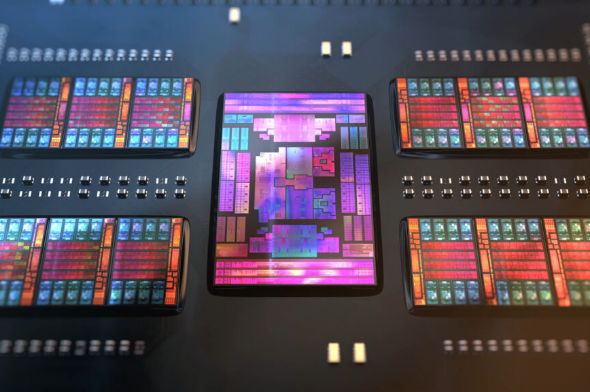Connection to DriversCloudCreate a DriversCloud.com accountReset your DriversCloud.com passwordAccount migration
96 cores, 1.25 GB cache: EPYC Genoa-X, AMD's next server processors
Absolutely monstrous processors that should be released before the end of summer 2023.
In the battle between AMD and Intel, we often think of the duel between Ryzen and Core processors. However, there is another opposition that has at least as much importance - if not more - in the eyes of the two American companies. It concerns processors for servers and other data centers. On one side, at AMD, we find the EPYC family and on the other side, at Intel, the Xeon processors. The latter had a certain lead, but for almost three years, they have been "taking the heat" from their direct competitors... and it doesn't seem to be getting any better.
Indeed, in the next few months, AMD should distribute the new declination of its EPYC. A variation that obviously surfs on the success of the Zen4 architecture through two ranges named Genoa and Genoa-X. The first ones seems to be already beautiful beasts with, in particular, particularly muscular configurations totalling a maximum of 96 cores and 192 threads as it will be the case on the models EPYC 9654, EPYC 9654P and EPYC 9664. They will also benefit from TSMC's 5nm etch, PCI Express 5.0 support and DDR5 support.
That said, AMD still had a surprise up its sleeve: the integration of its 3D Vertical Cache technology on these processors codenamed Genoa. In this case, we are talking about a second variant called Genoa-X, which logically benefits from a much larger third-level cache. AMD would have four references in its cartons since the EPYC 9184X until the EPYC 9684X while passing by the 9284X and 9384X. The most powerful of them, the EPYC 9684X, would take the 96 cores/192 threads configuration of the most powerful Genoa, but would boost the third level cache for a mind-blowing total of 1.25 GB of cache.
This memory is divided up as follows: 384 MB of L3 cache integrated into the CCDs like on the Genoa CPUs, 768 MB of L3 linked to the 3D V-Cache technology and 96 MB of L2 cache. Remember that the Zen4 architecture implies the presence of 3 MB of L1 cache. In total, this EPYC 9684X processor has 2.6 times more cache memory than its "classic" Genoa counterpart. To make matters worse, the operating frequencies of the processor do not seem to be too handicapped by this additional cache: we are talking about 100 MHz less in the worst case (3.7 vs. 3.8 GHz) between the 9684X and the 9664. No doubt that the next Intel Xeons will have to worry about such monsters!







